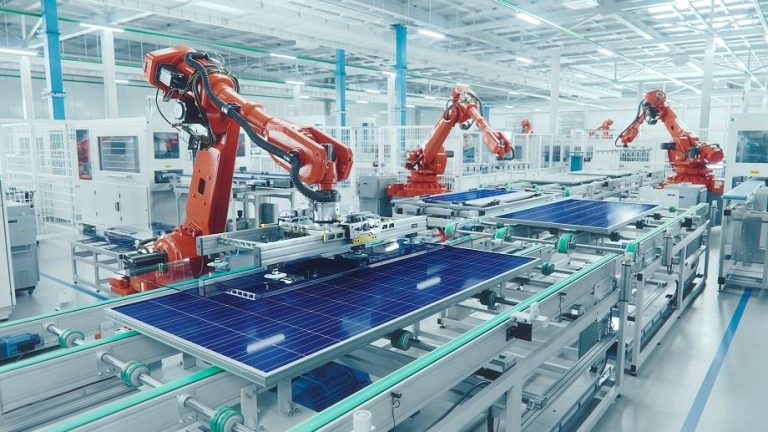Automation is moving from isolated pilot projects to the core of factory strategy, as manufacturers accelerate deployments of robots, AI-enabled vision systems and software to counter labor shortages, rising costs and supply-chain volatility. The shift is reshaping cost structures and competitive dynamics from Detroit to Dongguan, narrowing the gap between high-mix customization and mass production while testing long-held assumptions about productivity and employment.
The new wave of adoption is redistributing value across the ecosystem-toward integrators, software providers and sensor makers-and prompting a rework of capital plans, plant layouts and workforce training. Policymakers are pushing from the sidelines with subsidies and reshoring incentives, even as executives weigh cybersecurity risks, interoperability hurdles and uncertain payback periods. This article examines how automation is redrawing the manufacturing business landscape: who stands to gain, where the bottlenecks lie, and what the next phase of factory modernization means for competitiveness, jobs and growth.
Table of Contents
- Automation Closes the Labor Gap and Shifts Competition to Flexibility Quality and Lead Time
- Prove Early ROI Track OEE Scrap Rate Changeover Time and Energy Use and Start with Low Complexity Cells
- Build a People and Data Backbone Cross Functional Upskilling Open Standards and a Vendor Neutral Security Plan
- Key Takeaways
Automation Closes the Labor Gap and Shifts Competition to Flexibility Quality and Lead Time
With robots, cobots, and AI-driven scheduling absorbing routine tasks, manufacturers are offsetting chronic hiring shortages and shifting differentiation from labor availability to operational agility. Plants are retooling around modular cells, reprogrammable lines, and vision-based inspection to compress changeovers, lift first-pass yield, and tighten delivery windows. Procurement teams are recalibrating scorecards toward responsiveness and repeatability, enabling smaller suppliers that digitize to compete head-to-head with incumbents. The workforce is redeployed to programming and exception handling, while digital twins and predictive maintenance stabilize uptime and turn capacity into an on-demand resource for volatile demand.
- Flexibility: Rapid reconfiguration enables mix-and-volume shifts, engineer-to-order, and lot-size-of-one without margin erosion.
- Quality: In-line analytics and closed-loop controls improve traceability and boost first-pass yield across regulated and high-precision lines.
- Lead time: Shorter cycles and synchronized planning reduce queues and changeovers, supporting reliable promise dates under supply variability.
Prove Early ROI Track OEE Scrap Rate Changeover Time and Energy Use and Start with Low Complexity Cells
Factories are accelerating investment decisions by turning pilot cells into evidence generators: baseline current performance, instrument targeted stations, and publish weekly deltas that connect engineering effort to financial outcomes-an approach that favors quick wins in simple, self-contained operations while building a credible case for scale.
- OEE: capture availability, performance, and quality in a single stream; surface minute-level constraints and verify throughput gains against takt.
- Scrap rate: link defect tags to machine states; report cost per hour and first-pass yield to expose true margin impact.
- Changeover time: time-stamp last good/first good; apply SMED and track variance to target by SKU family to stabilize schedules.
- Energy use: log kWh per unit and idle draw; identify peak periods and cost-to-serve by product for procurement and carbon reporting.
- Start small: prioritize low-complexity cells-pick-and-place, case packing, palletizing-using preintegrated safety and low-code interfaces to deploy in days, not months.
- ROI model: weekly payback = labor hours redeployed + scrap avoided + energy saved − capex/opex; aim for sub‑12‑month breakeven with transparent assumptions and audit trails.
Build a People and Data Backbone Cross Functional Upskilling Open Standards and a Vendor Neutral Security Plan
• People backbone: Manufacturers are formalizing role-based competencies that bridge OT, IT, and data roles, tying progression to verified skills and on-the-job portfolios to accelerate redeployment as lines digitize.
• Data backbone: Plants are consolidating telemetry and quality records into a governed, federated layer using shared vocabularies and lineage tracking, enabling shop-floor-to-cloud analytics without duplicating data silos.
• Cross-functional upskilling: Shift-based learning, rotational “guilds,” and micro-credentials pair controls engineers with data scientists and cybersecurity staff, with productivity coaches reporting measurable cycle-time and scrap reductions within one quarter.
• Open standards: Interoperability is moving from aspiration to policy as sites adopt OPC UA, MQTT/Sparkplug B, and Asset Administration Shells for asset models, backed by open APIs in contracts to avoid lock-in and speed partner integration.
• Vendor-neutral security: Zero Trust architectures, SBOM requirements, and IEC 62443/NIST 800-82 controls are being mandated across mixed-vendor fleets, with identity-first access (FIDO2/SSO), segment-by-design networks, and red-team drills embedded in commissioning.
• Governance and metrics: Cross-functional architecture boards are prioritizing use cases by value and risk, tracking MTTR, FPY, data quality scores, time-to-skill, and attack-surface reduction to prove ROI as automation scales across sites.
Key Takeaways
As automation moves from isolated pilots to plant-wide deployments, its imprint on manufacturing is no longer theoretical. Productivity gains, shorter lead times and tighter quality control are increasingly visible, even as companies confront the costs and complexities of integration, new cyber risks and the realities of reconfiguring workforces.
The next phase will hinge less on headline-grabbing robots and more on the less visible work of standards, interoperability and change management. Executives are weighing capital budgets against clearer ROI models, unions and training providers are pushing for reskilling at scale, and policymakers are testing incentives and guardrails to balance competitiveness with job quality.
Key markers to watch over the coming year include whether mid-market manufacturers can replicate early adopters’ returns, how quickly AI-driven analytics migrate from trials to routine maintenance and quality assurance, and whether collaborative systems deliver on safety and throughput promises. Vendor consolidation and deeper tie-ups between equipment makers and software providers could further reshape the ecosystem.
For now, automation looks less like a single technology bet and more like a strategic reset. Manufacturers that align deployment with workforce plans, data governance and customer demand are likely to set the pace in an industry being rewritten in real time.


